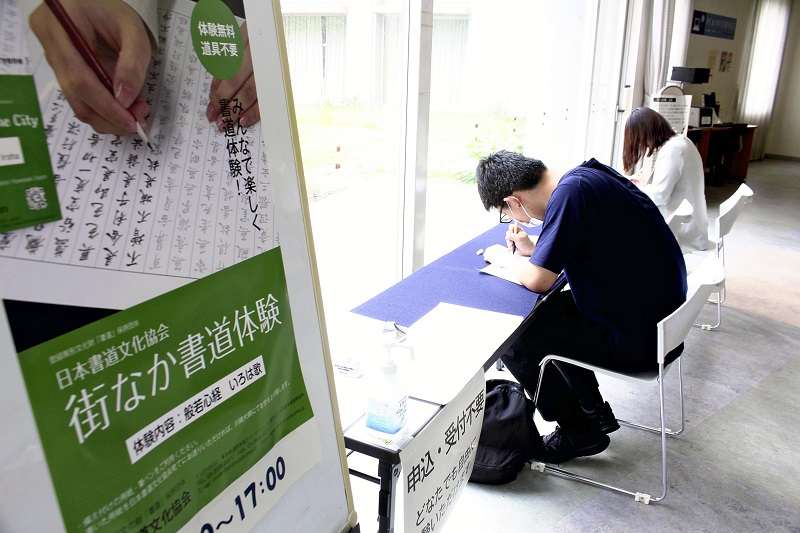Japanese calligraphy enthusiasts write new script to popularize art form

Participants in a calligraphy training course trace texts at the National Olympics Memorial Youth Center in Shibuya Ward, Tokyo.
11:03 JST, September 8, 2022
Annual summer exhibitions of Japanese calligraphy usually hold commentary sessions and exhibits open to the public nationwide, but this year has seen another wave of cancellations of events due to the coronavirus pandemic. However, new attempts are being made to promote the traditional art form.
Shodo, or calligraphy, was designated as an Intangible Cultural Property by the government in December.
The Japan Shodo Culture Association, an entity dedicated to preserving the art of calligraphy, has started a program called “Calligraphy Experience in the City.” In the program, people can trace calligraphic models of the “Heart Sutra” and “Japanese poem: Iroha” at places such as calligraphy supply stores that participate in the promotional campaign. Ink brushes and paper are provided to participants.
Keido Ishige, who is chairman of the association’s board of trustees and recognized as a “Person of Cultural Merit,” came up with the idea for the program. He was inspired by street piano performances in which pianos are placed at train stations and airports, and anyone can freely play them.
One place the program is being held at is the International Exchange Building in the National Olympics Memorial Youth Center, in Shibuya Ward, Tokyo. The event runs through Sept. 30.
Visitors to the center have taken up the brush, and 349 pieces of calligraphy were written from July 25 through the end of August.
Visitors can send these handwritten copies of the “Heart Sutra” texts to the association, which will then arrange them to be burned in a ceremonial bonfire at Kawasaki Daishi, a Buddhist temple in Kawasaki.
“We’d like to steadily increase opportunities for as many people as possible to experience calligraphy so they become familiar with it,” said Seiu Takaki, vice president of the association and a member of the Japan Art Academy.
Another attempt to promote the art form was an exhibition of calligraphy masterpieces titled “Can’t Read It, but I Like It” held at the Nezu Museum in Minami-Aoyama in Minato Ward, Tokyo, from July to August.
The exhibition tried to turn the tables on not being able to read the text or understand words, into an advantage to illustrate key points to appreciate the pieces, with explanations such as, “I can’t read it, but the sense of speed is pleasant.”
Young visitors enjoyed the exhibit.



